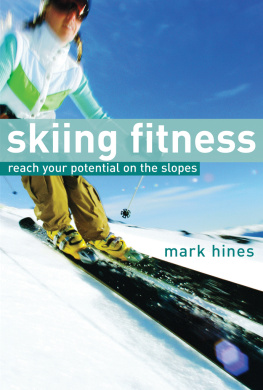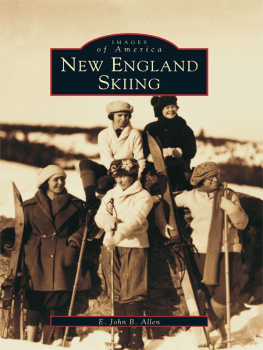. Abashevo Bronze age skier, c. 1500BC near Voronezh, Russia.
. Zalavruga, NW Russia, Rock drawings c. 2000BC.
. Prehistoric ski stick from Star Carr in Yorkshire, about 8000BC.
. The Kalvtrsk ski, 5,200 years old.
. Abu Hamid of Granada, twelfth century. Diagram of Yakut ski, North Russia.
. Hippopodes, Hereford map, thirteenth century.
. Oldest known picture of a Norwegian skier. Hereford map, thirteenth century.
. Peter Hgstrm, Swedish skier with two sticks, 1748.
. Tungus tribesman on ski, Siberia, 1727.
. Prehistoric ski tips, about 6000BC.
. Mongolian tribesman skiing downhill, Altai 2005, Sianking region of China.
. Sigismund von Herberstein, skiers in Russia 1571.
. Olaus Magnus, Carta Marina, 1539.
. Albertus Pictor, fifteenth century, Esau as hunter on skis.
. Bksta runic stone, Sweden, about AD 1050.
. Linnus, 1732. Lapp ski and stick.
. Finnmark Lapps, Knud Leem, 1767.
. A. de Capell Brooke, 1827. Norwegian ski troops.
. Tungus ski and sticks from Siberia, 1844.
. Kick turn as military drill.
. Otto Theodor Krohg.
. Poster for the first Nordic Games.
. Newspaper advertisement for a ski race, California, 1869.
. Earliest known technical drawing of a Norwegian ski, 1804.
. Ski with heel strap, 1667.
. Ainu hunter on skis, Japanese print 1855.
. Fridtjof Nansen, the first crossing of Greenland, 1888.
. Ski jumper landing at Huseby, Christiania [Oslo] 1883, having cleared 20 m.
. Studio photograph of Laurentius Urdahl, Roald Amundsen and Vilhelm Holst, 18934.
. Norwegian lady skier, 1880s. Probably Eva Nansen.
. Norwegian mountain skier and hunter, 1880s.
. Olaf Kjelsberg, late 1880s.
. Tobias Branger, pioneer of skiing at Davos.
. Dr Alexander Spengler, in 1897.
. Downhill technique, Switzerland, 1890s.
. First known illustrated coverage of skiing in the English press.
. Mathias Zdarsky.
. Arthur Conan Doyle and his sister, Lottie, at Davos, 1894.
. Katherine Symonds, probably the first Englishwoman to ski in Switzerland.
. French postcard, about 1907, with W. Durban-Hansen in the Savoy Alps.
. Olav Bjaaland, Chamonix, January 1909.
. At a depot on Amundsens journey to the South Pole 191112.
. Roald Amundsen arriving at Eagle City, Alaska, 5 December 1905.
. Amundsens Antarctic diary on Belgica, 5 August 1898.
. Oscar Wisting at the South Pole with his dogs and skis, 14 December 1911.
. The Huitfeldt steel toe iron binding, patented 1897, with the Hyer-Ellefsen tensioning heel clip, 1904.
. Drawing for patent application for Kandahar binding by Guido Reuge, 1929.
. Guido Reuge, inventor of the Kandahar binding.
. The first toe binding to go into production.
. The original Rottefella (Rat trap) toe clip cross-country binding.
. Early advertisement, c.1930, for the Rottefella.
. Genesis of the laminated wooden ski.
. Longboard racing among the miners, California, 1874.
. The first known advertisement for a commercially produced ski wax, 1888.
. Norwegian patent from 1907 for automatic waxing device on skis.
. Norwegian soldier, c. 1814.
. Ski jumping, military style Norway, 1765
. Attack on Tartars by Russians and Mordvins 1444.
. Finnish ski troops moving up to the firing line, Russo-Finnish Winter War.
. Erling Kagge being dropped off in Antarctica, 18 November 1992.


To my wife, Anita
Contents
.
Maps
. Eurasia.
. Fennoscandia.
. Soviet offensives during the Russo-Finnish Winter War of 193940.
The origins of this book lie in Scott and Amundsen, Shackleton and Nansen, my cycle of modern polar exploration, which culminated in the victory of Amundsen in the race for the South Pole in 1911. He owed his triumph to the ski and, to dispel the fog of history, I wanted to explain the reasons why.
Books, however, do not always turn out exactly as foreseen. Amundsen was not just a skier. At a deeper level, as a Norwegian, he issued from a culture that happened to include the ski. It was not enough. Other countries beckoned. The distant past loomed over the horizon. One thing led to another. Unexpected topics sprang up; climate change in particular.
These linked the present with the past. Skiers were among the first to sense the latest round of the climatic cycle, for it touched the very existence of their snow. Little Ice Age or global warming, they saw each as a natural phenomenon and adapted to its demands. In the end I found myself immersed in the whole history of skiing. This work is the result.
In the long preparation of this book I have enjoyed much generous assistance. First, I must thank the President and Fellows of Wolfson College, Cambridge, Dr Gordon Johnson in particular. The resources of the University were essential to my work. I am grateful to the University Library, the library of the Faculty of Classics, and the Haddon Library of the Faculty of Archaeology and Anthropology, all inexhaustible scholarly havens in a sympathetic ambience. Even in a digital age, that counts for much. I owe a great deal to many willing helpers of whom I can only pick out a few by name. Mr Charles Aylmer, head of the Chinese section at the University Library, gave indispensable support in translating classical Chinese texts and tracking down arcane sources. Noburu Koyama, head of the Japanese section, was equally helpful in his field. Dr Marsha Levine, of the McDonald Institute for Archaeological Research generously shared her specialized knowledge to help me with the little-known Russian Bronze Age Abashevo culture.
I also wish to thank the long-suffering staff of the British Library in London. Mr Hamish Todd, head of the Japanese section, gave invaluable assistance.
Nick Lewis, Kelly Tyler and Ketil Reitan offered insights into modern polar adventuring. Arnie Wilson lent material on early skiing in America. I must also thank Sir Alistair Horne for continued encouragement. Susie Nixon has kept me on an even keel.
A good editor is an authors best friend, and in that spirit, I wish to thank my agent, Rivers Scott. He devoted much skill and patience to this book.
Norwegian sources were clearly central to my task. The Ski Museum at Holmenkollen in Oslo must be the prime repository of skiing lore, and I spent many a rewarding hour there. I particularly wish to thank Karin Berg, the Director and her assistant, Rune Flaten. They never failed to answer my sometimes frantic calls for help besides spontaneously offering unexpected and recondite material. I am also grateful to Leif Torgersen for generously sharing his knowledge of skiing history and his professional expertise in the physics of snow. To him and Karin Berg I must express my heartfelt thanks for reading through the manuscript and saving me many an egregious blunder thereby. Any faults remaining are my own.
Thanks are also due to the Norwegian National Library in Oslo, always a pleasure to visit. As usual, Oddvar Vasstveit and Sigbjrn Grindheim, of the Manuscript Department, helped beyond the call of duty.
A special vote of thanks goes to Odd Rstvig, formerly of the National Library. Mr Rstvig performed the Sisyphean task of combing the Norwegian press meticulously on my behalf. He turned up much unexpected material. Whole sections of this book depended on his work.









